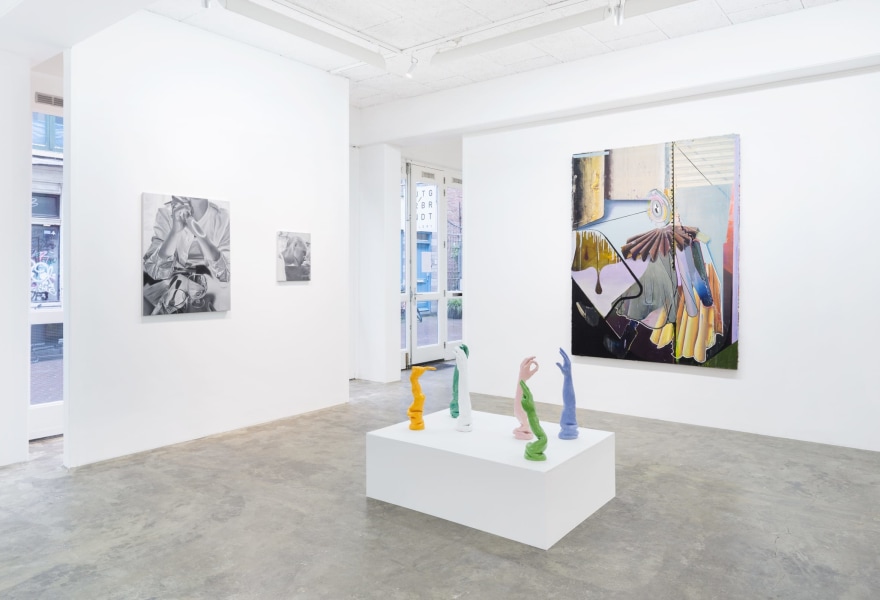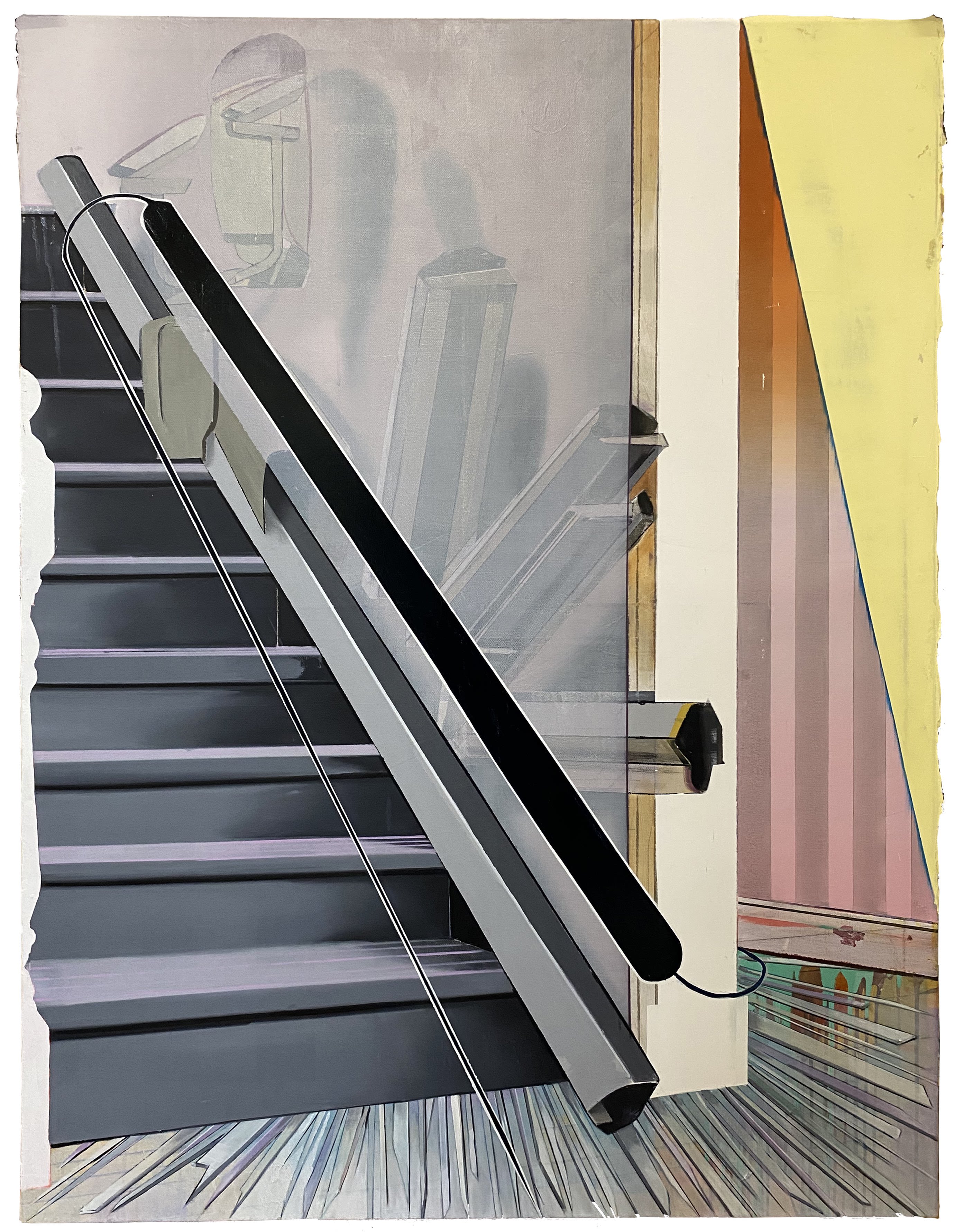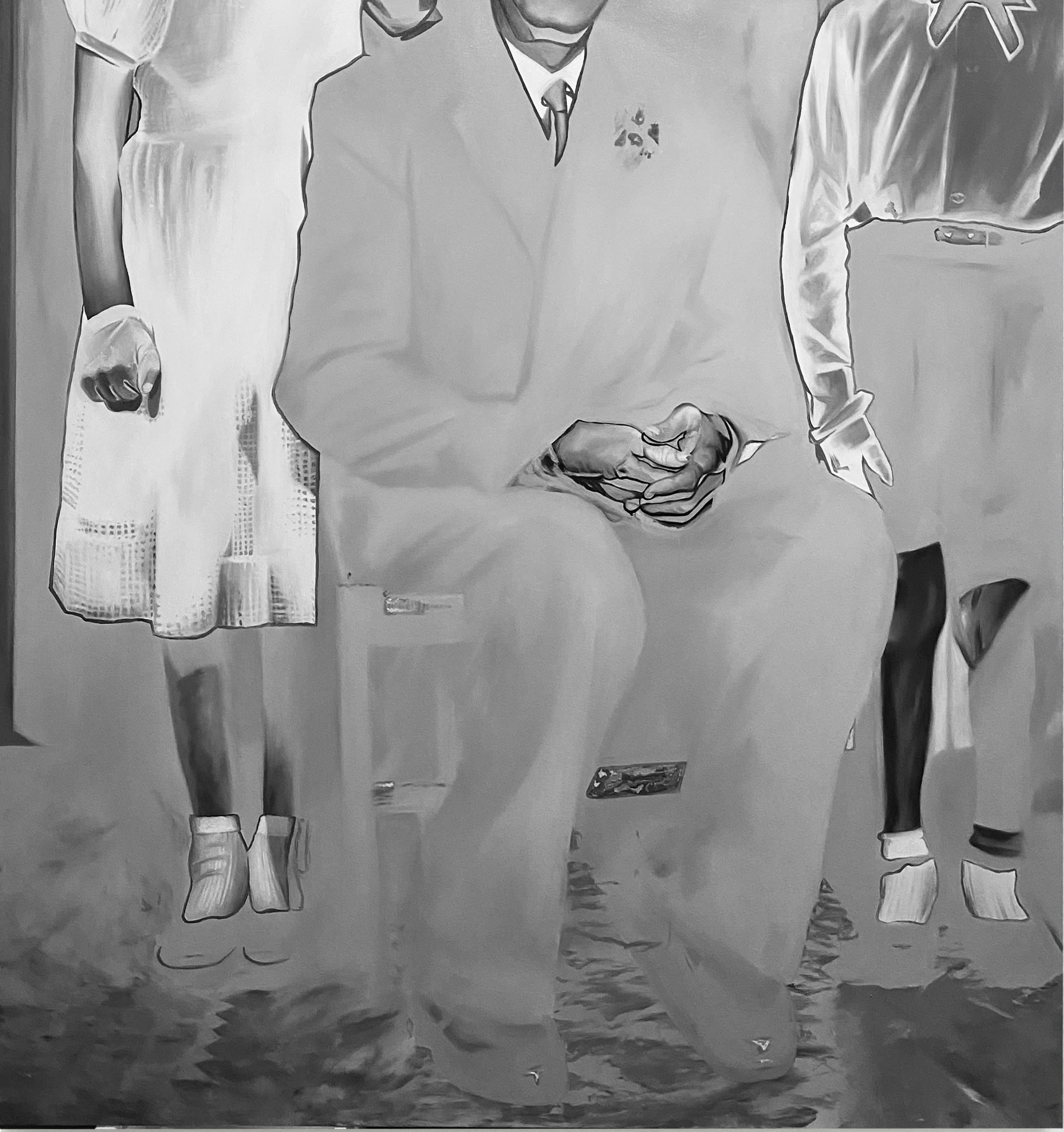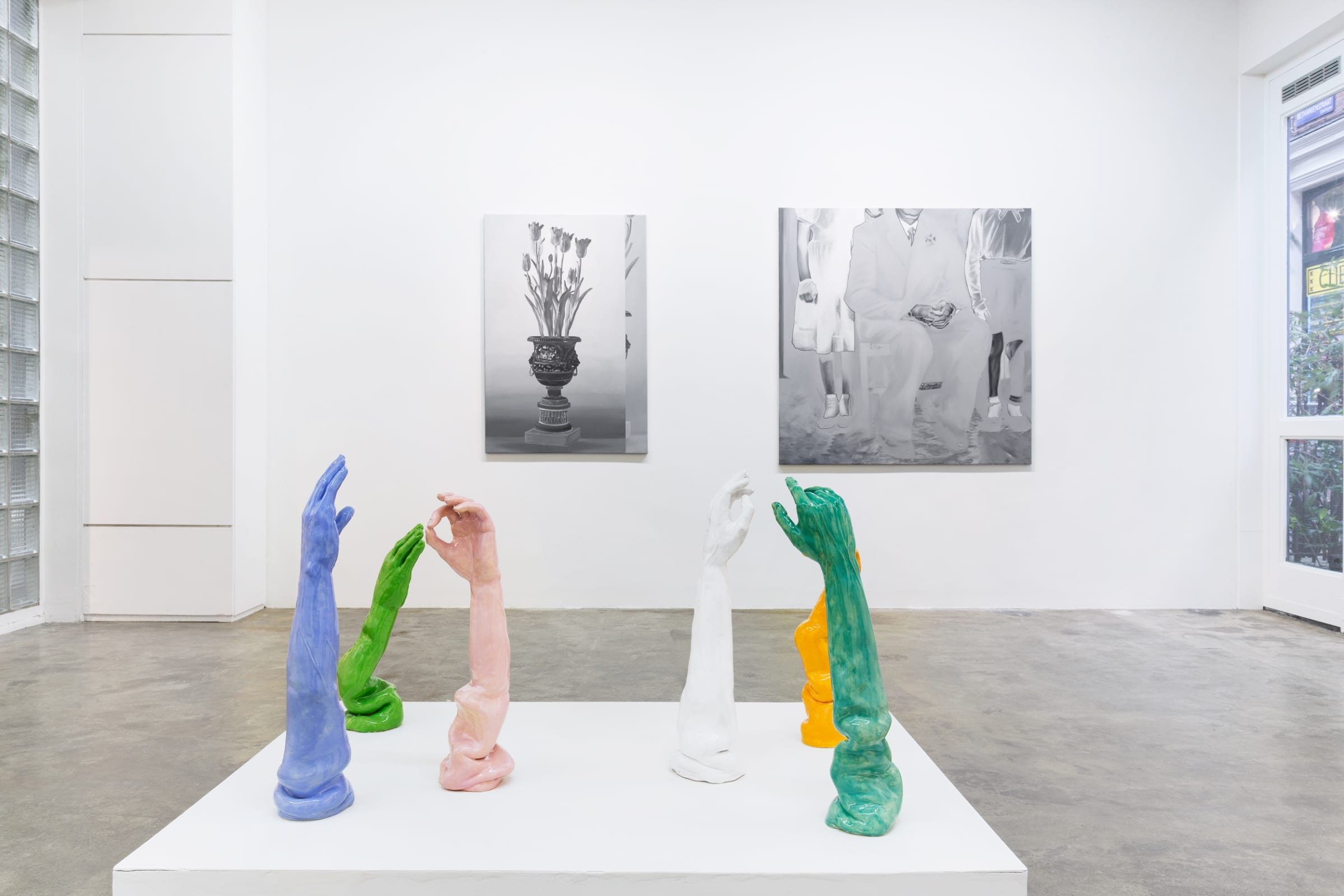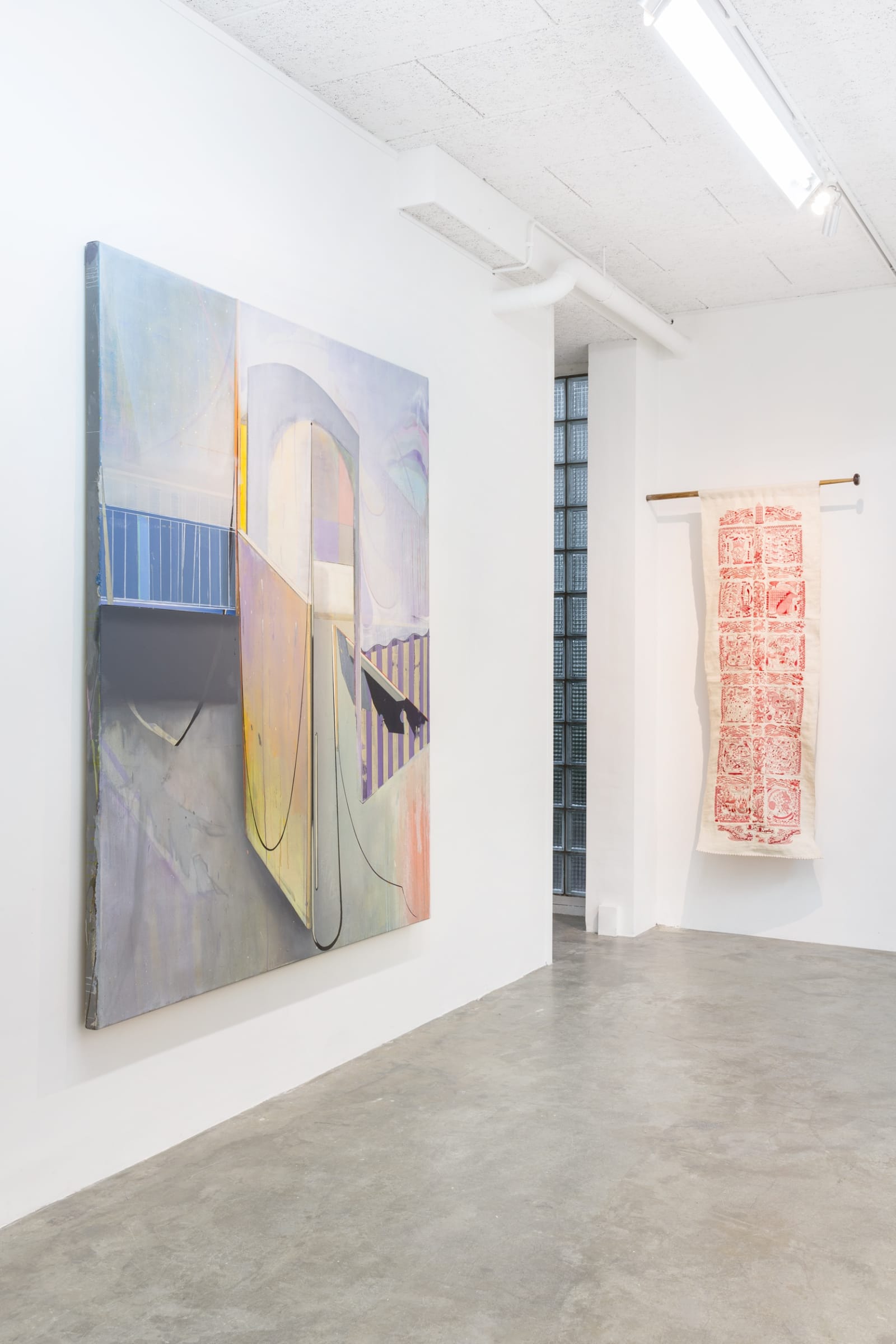20 october 2023, Flor Linckens
An exciting interplay in Rutger Brandt Gallery
Until 11 November, Rutger Brandt Gallery in Amsterdam is showing a group exhibition featuring the works of four artists: Christian Hellmich, Antonino De Caro, Bastien Pery, and Fanja Bouts. The exhibition presents a captivating interplay between fragmented architectural spaces, memories, cultural identity, and textile art.
The German artist Christian Hellmich creates fragmented architectural spaces depicted through blocks of colour, grid patterns, and fading movements, giving the impression that space and time converge in a distorted perspective. These paintings often portray anonymous spaces devoid of human presence. While initially figurative in appearance, they tend towards abstraction. In his work, the artist employs not only muted gray tones but also vibrant colours such as yellow, purple, and pink, yet his compositions evoke a somewhat somber and dystopian atmosphere. Some of his exhibited works measure nearly 2 by 2 meters, while others are much smaller, only 20 by 40 centimeters. Hellmich draws inspiration from the resurgence of modernist representational painting by the Neue Leipziger Schule and draws from a personal archive of photographs, magazines, postcards, and images from the internet. His artistic practice, in a sense, serves as a critique of how our contemporary, heavily digitized society engages with imagery. In July of this year, KERBER released the book 'Tivoli' featuring Hellmich's work.
The work of Italian artist Antonino De Caro is deeply influenced by his identity and cultural heritage. In his ceramic hand series, for example, he explores the cultural contrasts between Southern Italian expressiveness and the more reserved Northern European tradition. When he moved to the Netherlands to study at HKU in Utrecht, he suddenly became aware of his hand gestures, which in Italy are a part of language but immediately label him as Italian in the Netherlands. He became intrigued by the renewed significance of these seemingly everyday actions and the complex relationship between human communication and identity. De Caro: “How many things hands can communicate; their own innate language transcends any artificial one.”
In the exhibition at Rutger Brandt Gallery, you'll also find an embroidered jute flag created by Fanja Bouts. The recent graduate conducted extensive research into ancient Italian fresco, pigment, and weaving techniques, which previously culminated in a monumental graduation piece in which she depicted 12 scenes that blend historical and contemporary feudal systems. Despite the serious themes in her work, the artist frequently employs playful humor, and her background in nature and astronomy is also prominently woven into her art.
